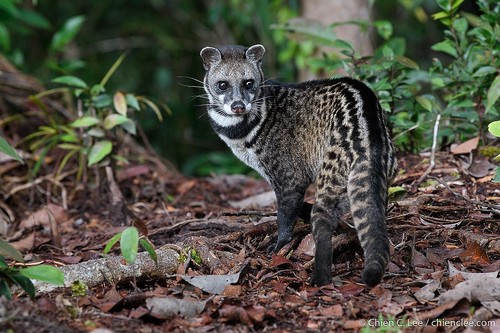
Malay Civet
The Malay civet (Viverra tangalunga) prowls the night in Southeast Asia's forests. With striking neck stripes and keen nocturnal habits, it aids in seed dispersal, supporting plant diversity. This elusive creature, adaptable to various habitats, exemplifies nature's intricate balance and resilience.
15-20 years
Lifespan
1.4 - 4.5 kg
Weight
Height: 43 - 71 cm
Size
Brown, Grey, Yellow, Black, White, Tan
Color
Least Concern
Conservation Status
Stable
Population Trend
Characteristics
Viverra tangalunga, commonly known as the Malay civet, is a nocturnal mammal native to Southeast Asia. It inhabits forests, plantations, and rural gardens. Distinguished by its long body, short legs, and distinctive black and white stripes on its neck, it plays a crucial role in seed dispersal.
Distribution Range of the Malay Civet
Viverra tangalunga, commonly known as the Malayan civet, is native to Southeast Asia. Its geographical distribution includes the Malay Peninsula, Borneo, Sumatra, and several smaller islands in the region. It is also found in parts of the Philippines and has been introduced to Sulawesi and the Maluku Islands.
Malay Civet's Habitat
Environmental Conditions
The Malayan civet is typically found in tropical rainforests, which are characterized by high humidity and stable, warm temperatures throughout the year. These forests provide dense vegetation and a variety of microhabitats that support the civet's lifestyle.
Ecological Niche
Viverra tangalunga is a nocturnal and solitary animal, primarily terrestrial but capable of climbing. It occupies a carnivorous and omnivorous niche, feeding on small animals, insects, and fruits. It plays a role in seed dispersal due to its fruit consumption, and its ecological niche is shaped by its adaptability to both primary and secondary forests.
Copyright @ Nature Style Limited. All Rights Reserved.
 English
English